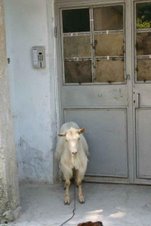Romania - Moldavia
Moldavia (Moldova) – The land of legend and history.
Last summer I was in the UK, in Lancaster, to be more precise. Meeting a lot of people from all over Europe meant a lot for me. Many of them when hearing I was from Romania started asking me questions about Dracula, Ceausescu or Ion Ţiriac and Nadia Comaneci. It was a pleasure to answer their questions. One day when asked where I was from I answered I was from Romania and I added “From the north-east of the country to be more exact. From Moldova or Moldavia how it is pronounced by the foreigners”. Oh dear!!! After that the History teacher within me came out and gave a short lesson about this historic region of modern Romania. Many people do not know anything about Moldavia and the Republic of Moldova, yet.
In the ancient times this land was not under the Roman rule as other regions of Romania. The Romans under Trajan’s command came in Dacia in 101 and established the Roman province of Dacia Felix (in the south of present day Romania) and they stayed here until 271 when the imperial administration quitted the area. On the occasion of conquering Dacia Trajan erected a wonderful column in Rome. This ancient monument still exists today and can be admired by the tourists.
What is now Moldavia, or Moldova in Romanian, was inhabited by the Dacians who remained outside the direct influence of the Romans. There are pseudo-historians who claim that the Dacians from what is today Moldavia had no contact with their brethren in the south. There is nothing more ridiculous! They kept contact and actually developed to the same rhythm as the south. The Roman settlers who came to Dacia influenced the pattern of everyday life, language and culture of the locals both in the province and outside its borders. Thus the Romanian people emerged as a synthesis of the Romans and the Dacians. The language they spoke was a mixture of local elements (of which little is known today but for some 200 words) and of Latin (Latina vulgaris).
In the Middle Ages the Romanian people lived in three principalities: Wallachia (Tara Romaneasca - in the south between the Carpathians and the Danube), Transylvania and Moldavia (between the Carpathians in the west and Tyras or Nistru in the east). During the Middle Ages the principality of Moldavia became one of the most prosperous region inhabited by the Romanians. Stefan cel Mare (1457-1504), or Stephen the Great in English, fought the Turks and other invaders and kept his country free and independent.
The 19th century was not the best period ever for Moldavia. The Russian tzars considered the strategic and economical potential of this region and in 1812 they occupied the area between the Prut River (west) and Nistru (east). The occupied part of Moldavia was transformed by the Russian authorities into a guberniya. The Romanian majority population was forced to use Russian in their relations with the administration, the local Romanian elite was prevented from reaching good jobs and many intellectuals were taken to Siberia. This brutal act separated the two halves of the largest Romanian principality. To a great extent the Moldavians on the left bank of Prut lost their national Romanian identity and language due to the lack of contact with the rest of the Romanians and to the brutal policy of the Russians.
Meanwhile on the right bank of Prut the Romanians in the three principalities decided to unify. So in 1859 Wallachia and Moldavia joined their administration under a single elected prince, Alexandru Ioan Cuza. In 1918 Transylvania, after holding a special council, decided to unify with Romania. This is how modern Romania appeared on the map of the world.
Today Moldavia is still divided into two parts by the Prut River. On the right side – which is in Romania – there are 8 counties (from north to south: Suceava, Botosani, Iasi, Neamt, Bacau, Vaslui, Vrancea and Galati). The Romanian region itself spans over 46,173 km² (19.5% of Romania's territory) and its total population is 4,681,555 as of 2002 (21.6% of Romania's population).
On the left side of the Prut was proclaimed the Republic of Moldova. This part of the historic Moldavia remained under direct Russian control until 1991 when it gained its independence from Moscow, at least formally. There were some attempts to unify with Romania but there was no real political intention to do this. The government form Chisinau still has problems with Transnistria, the region on the left bank of Nistru, which under the Russian unofficial control proclaimed its independence from the national authorities on the right bank.







No comments:
Post a Comment